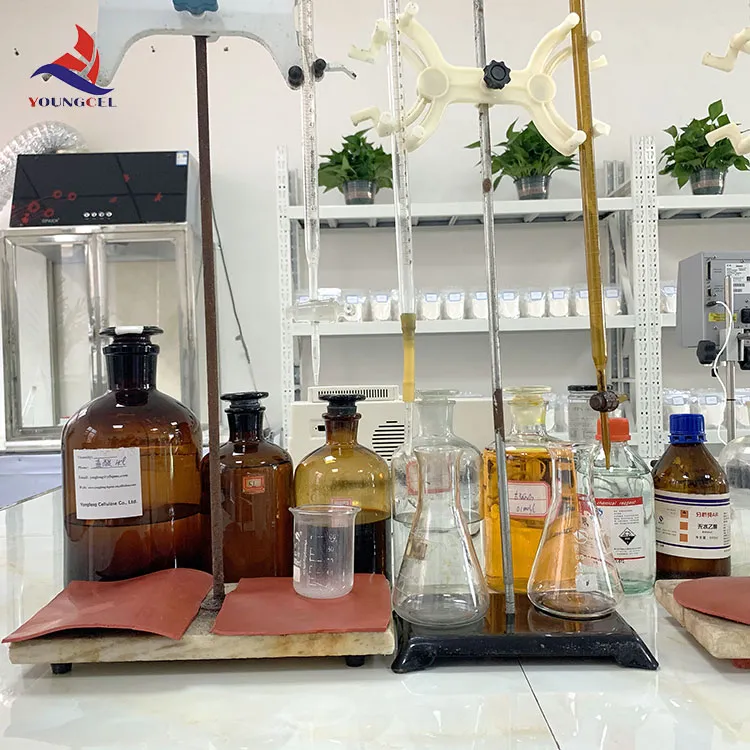The Price Trends of Cellulose Ethers An Overview
Cellulose ethers are a group of synthetic compounds derived from cellulose, commonly used in a range of applications, including pharmaceuticals, food products, cosmetics, and construction. As a versatile additive and thickening agent, cellulose ethers play a pivotal role in enhancing the texture, stability, and performance of many commercial products. Understanding the price trends of cellulose ethers is crucial for manufacturers, suppliers, and consumers alike, as these trends often reflect broader economic conditions, supply chain dynamics, and shifts in consumer demand.
Key Factors Influencing Prices
1. Raw Material Costs The primary raw material for cellulose ethers is cellulose, which is sourced from wood pulp or cotton. Fluctuations in the pricing of these raw materials significantly influence the overall market price of cellulose ethers. Any disruptions in supply due to natural disasters, trade restrictions, or changes in production capacities can lead to volatility in prices.
2. Production Costs The manufacturing process for cellulose ethers is energy-intensive and involves multiple chemical reactions. Changes in energy costs, labor rates, and overhead expenses can thus directly impact the production costs, leading to variations in market prices. Moreover, advancements in technology may help reduce production costs over time, potentially stabilizing prices.
3. Market Demand The demand for cellulose ethers is influenced by consumer trends and preferences. For instance, the growing use of natural and organic ingredients in personal care products can boost the demand for cellulose ethers, pushing prices upward. Conversely, an economic downturn may reduce consumer spending, impacting demand and leading to price declines.
4. Geopolitical Factors The cellulose ether market is not immune to geopolitical tensions and trade policies. Tariffs, sanctions, or trade agreements can affect the import and export of cellulose ethers and their raw materials, resulting in price fluctuations on a global scale. Manufacturers must stay abreast of such developments to manage their supply chains effectively.
5. Environmental Regulations Stricter environmental regulations may impose additional costs on manufacturers, especially if they require more sustainable sourcing of raw materials or cleaner production techniques. Compliance with these regulations can lead to price increases, as companies often pass on these costs to consumers.
cellulose ether price

Recent Trends
In recent years, the market for cellulose ethers has experienced notable changes. The COVID-19 pandemic initially disrupted supply chains, leading to short-term price spikes. However, as economies have gradually reopened, demand has rebounded, particularly in the construction and personal care sectors. Prices have shown signs of stabilization, although fluctuations remain due to ongoing supply chain challenges and inflationary pressures.
Furthermore, there is a growing trend towards the use of biodegradable and eco-friendly cellulose ethers. As companies pivot towards sustainability to meet consumer demands, this shift could influence the pricing landscape. Eco-friendly alternatives might come at a premium initially, but as production scales up, prices may become more competitive.
Future Outlook
Looking ahead, the pricing of cellulose ethers is expected to exhibit both stability and volatility. Factors such as technological advancements in production methods could potentially lower costs, while ongoing geopolitical tensions and environmental regulations may keep prices buoyant. Additionally, as markets for pharmaceuticals and personal care products continue to expand, demand for cellulose ethers is likely to remain strong, which could support higher price levels.
Ultimately, stakeholders in the cellulose ether market must remain agile, continuously monitoring the key factors that influence pricing. By doing so, they can better navigate the complexities of this essential ingredient’s market dynamics, aligning their strategies with prevailing trends to optimize their operations effectively.
Conclusion
In conclusion, the pricing of cellulose ethers is influenced by a myriad of factors, from raw material costs and production expenses to market demand and geopolitical conditions. As the industry evolves and adapts to changing consumer preferences and regulatory landscapes, a thorough understanding of these price dynamics will be essential for all market participants, ensuring they remain competitive in a rapidly changing environment.
-
The Application and Significance of Construction RdpNewsMay.19,2025
-
Industrial Grade HpmcNewsMay.19,2025
-
Building Coating Adhesive Building Coating Adhesive HpmcNewsMay.19,2025
-
Application Of Hpmc For Detergent For Detergent In DetergentsNewsMay.19,2025
-
Application Of Hpmc Cellulose In Cement-Based MaterialsNewsMay.19,2025
-
Application Of High Quality Hpmc For Construction In The Field Of ConstructionNewsMay.19,2025




